AUTHOR: Kenda Macdonald
As a dedicated consultant, I specialise in elevating businesses through top-tier consultancy, fueled by a deep understanding of buyer psychology cultivated over years of experience. My expertise lies in crafting marketing and sales strategies that propel businesses to new heights by leveraging insights into the buyer brain. As a bestselling author, public speaker, and strategist, my passion for decoding human behavior drives me to innovate and deliver unparalleled results. I've designed a methodology adaptable for all types of businesses, ensuring transformative customer journeys and experiences.
What is customer segmentation?
Customer segmentation is the practice of dividing your potential and existing customers into groups that are similar in specific ways relevant to marketing efforts. People are routinely segmented using factors such as age, gender, interests or spending habits.
Why segment? Companies that segment understand that every customer is different. So segmentation allows companies to effectively target specific, smaller groups with relevant messages in order to streamline marketing activities. As it’s impossible to speak to every single different customer in a different way.
When it comes to segmentation, one of the first questions I ask my clients is:
"What are your customer types?”
The answer I get back most often is: Prospect, Customer, and then some segmentation by the customer type with regards to service or product purchased.
Now this answer isn't wrong, it's just misinformed and maybe slightly simplified.
Your goal with your marketing, and marketing automation, is to build relationships with your audience. To be effective at that you need to make sure you are talking to them appropriately and give them a personalised experience or they will feel like one of the many.
The personalised experience you give them should always be catered to their needs in the moment, and by far the easiest way to do that is to segment your audience by their type.
Oh yes - we're talking full on divide and conquer here…
In our opinion there are 13 different types of customers that can help you behaviourally segment. These are:
- Prospects
- Suspects
- Leads
- New Customers (good)
- Novice customers (good)
- Active customers (good)
- Repeat customers (good)
- At risk customers (bad)
- Lapsed customers (bad)
- Unhappy customers (bad)
- Loyal customers (awesome)
- Referral customers (awesome)
- Advocate customers (awesome)
Related content: Why traditional funnels are ruining marketing
Prospects and customers are different. Don't treat them the same
If that statement has caught you off guard, let's look at a real life application of this.
Let's say you're going down to the pub for a drink.
At the bar, you bump into an old friend. You get talking, and the conversation is easy and flows well. A little later, your friend calls someone over, someone you have never met before. You get introduced - how do you talk to the new person vs your old friend?
You can't take the same stance as you did with your old friend, because you don't have the existing relationship to build on. So instead, you put effort into getting to know this new person, and you get on quite well.
An hour or so later, the new friend calls another person over, you've also not met this person before. Now you can't talk to this very new person the same way you spoke to your old friend, and you can't talk to them in the exact same way as you are currently talking to your new friend because you have zero relationship with them. You need to start from scratch again.
You're juggling 3 relationships here, more than likely with ease, and you're automatically catering your conversation to the type of relationship you have with the person you're speaking to.

Why would you treat your audience any differently?
Your brand spanking new prospects can't be spoken to in the same way as your loyal customers because the relationship that you have with them is at different places.
You need to be catering to their needs in their specific moment.
Even if you're a pro at segmentation, chances are you aren't segmenting deeply enough.
Attract more leads with our FREE Attract Playbook download:

What are customer categories?
Don't get hung up on creating loads of different types of communication for EACH type of customer. Rather the idea is to identify which categories need to be treated wholly differently.
Wait, that’s a new terms. What's a Customer Category??
Don't panic! A customer category is simply a grouping of segments. For instance, there are 3 types of prospect, each of those types of prospect is considered a segment, but the overall theme is "New person on the list" - this is a customer category.
As in the image below:

I have grouped them by the same categories in the descriptions to make it easier 🙂
Related content: Customer lifetime value - where your profits really come from
What are the different types of customer and prospect. And how to segment for them
We have identified that there are 13 different types of customers that you can segment your audience into. See, prospect and customer aren’t necessarily wrong. It just isn’t going far enough.
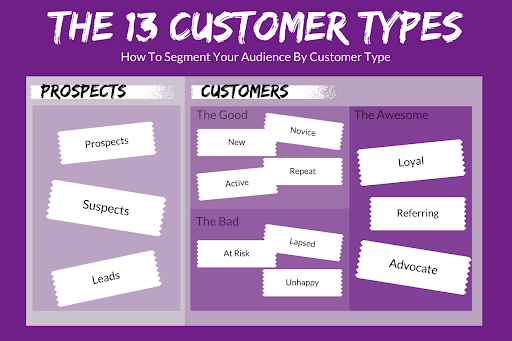
How far should you go with segmentation?
So, how far should you go with customer segmentation?
My suggestion for you is to segment for as many of the 13 types as you can. Then to identify which categories (or groupings) you will talk to differently.
From there, use the segments themselves in specific launches, and to identify points in your marketing process that may need a bit extra, or different handling to help those segments convert.
CATEGORY: PROSPECTS
Prospect
The first category is prospects. There are three segments within this: prospect, suspect and lead
How to define a Prospect:
- Someone who is on your list, but has not yet made any kind of purchase or commitment to you. Generally this is some one who has signed up for something, but has not engaged with your marketing just yet. They may also be brand new to your list ie. complete strangers to you and your brand. You need to work hardest on developing a relationship with these unknowns.
How to segment Prospects out:
- Prospect is your default position - these people are invariably brand new, and not had a chance to engage with you or your content and services. It's up to you to wow them and knock their socks off, to get some engagement, or get them to show interest in your offerings. You can segment your prospects out by finding your newest subscribers, and treating them like the new person at the bar. Get to know them and start building a relationship. Once they have engaged, they become a lead.
Suspect
How to define a Suspect:
- A contact that fits the profile of current customers. This is an extremely valuable prospect type to track. Because Suspects are similar to customers that have already converted, you *know* they are a good fit for your products. They are also incredibly useful for super targeted advertising. An example of this is Facebook's lookalike audiences.
How to segment Suspects out:
- Suspect segmentation can be a tough nut to crack. The simplest way to reliably identify your suspects is to deconstruct the behaviour of your current customers - then create mechanisms to track this behaviour. When a new prospect or lead then behaves in the same manner, label them as a suspect. Then give them some extra loving to convert them.
Leads
How to define a Lead:
- Prospects who have performed a specific sales related Micro conversion, such as signing up to the leadmagnet of a sales funnel, and giving you some personal information in the process. They are much more qualified than prospects, and require quicker actioning than suspects.
How to segment Leads out:
- Leads are your prospects whose behaviour dictates they are specifically interested in a specific product or service. In order to segment them out, you need to identify which of your Micro Conversions specifically relate to your sales process. Once a prospect signs up for one of those items, or performs one of those specific actions - they are a lead. Label them appropriately and have processes in place to action on the opportunity (such as passing the lead onto the sales team if you have one).

A Brief detour for Micro and Macro Conversions:
Micro Conversions are the small steps a prospect may take towards the primary conversion goal: It’s all the little things that they do in order to get to the point where they are ready to become a customer.
Macro Conversions are your end goal: Most often the purchase. It’s the final commitment your prospect makes in order to become a customer (or a repeat customer, loyal customer etc).
Macro Conversions are commitment, Micro Conversions are engagement. You can’t have a Macro conversion without a multitude of little Micro conversions.
Micro conversions are considered actions such as:
- Clicking on a link
- Opting-in for something
- Showing interest in a specific product
- Newsletter sign ups
- Looking at specific pages on your website
- Watching Videos
- Social Media Engagements (such as likes, follows, shares, comments etc)
- Time spent on your site (above average)
- Visit Frequency and Recency (above average)
All of the above are considered engagement activities.
There are two broad groups of Micro Conversion:
1. Process Milestones
2. Secondary Actions
Process Milestones are the Micro conversions that can be equated to a linear movement towards the conversion/end goal.
Secondary Actions aren’t related to the primary goal but are desirable actions because they build trust and relationships.
When understood correctly, Micro conversions will help you predict a Macro conversion.
If you utilise Micro conversions properly your prospects will be much more comfortable with a Macro conversion.

CATEGORY: CUSTOMERS
The other category is customers. These can be separated into, the good, the bad and the awesome. Once into these, they can then be segmented further again.
Customers: The good

New Customer
How to define a New Customer:
- A contact who has just made their first purchase/ macro conversion.
Macro Conversions being your end goal: (Most often the purchase.) It’s the final commitment your prospect makes in order to become a customer (or a repeat customer, loyal customer etc).
Tracking and engaging new customers and welcoming them on board uniquely can guarantee a second sale, and a loyal customer. New customers should be defined as a customer between a certain range of time, ie 30 to 60 days, depending on your sales cycles
I advocate running specific welcome campaigns just for New Customers to help Wow them and get a second sale.
How to segment New Customers out:
- Identify and label all your customers that have converted in the last 30 to 60 days. These are your New Customers, onboard them and nurture them just as you would a prospect and you will have a happy customer, happy to spend money with you again and again.
Active customers
How to define Active Customers:
- Customers who have made one or more purchases from your store, and are currently active, ie they are within the "normal" or "average" recency and frequency range.
How to segment Active Customers out:
- Define what your average purchase frequency (amount of purchases) and average purchase recency (time between purchases) is. Your customers that are active and fit within that criteria are your Active customers. You should be nurturing and loving these customers just as you would your prospects - as this will ensure you keep them as a customer.
Novice Customer
How to define Novice Customers:
- These are customers who are in the the process of implementing the product and/or getting training
the first time round. *Customers in this category can often fall into other categories at the same time* These customers differ from New customers as they may already be repeat purchasers (ie they have bought more than one of your products/ services) but they are new to the product/ service they have purchased. Here a little bit of handholding or extra "how to" information can go a long way to creating engagement and an advocate customer.
How to segment Novice Customers out:
- Identify the products or services that you offer that need a little bit of extra handholding to make your customer as successful as possible. Customers who then purchase those products are your Novice Customers.
Repeat Customers
How to define Repeat Customers:
- These are your ideal customers - those who have made more than one purchase and are buying happily at their expected purchase frequency - perfect in other words!
How to segment Repeat Customers out:
- Identify your average purchase frequency, any of your customers who are buying within this average range are your repeat customers. Love them for their loyalty to turn them into proper loyal customers. I advocate running specific campaigns to turn customers into repeat buyers.
Customers: The Bad

At Risk Customers
How to define At Risk Customers:
- These are the customers who have passed your average time period for next purchase, based on the average purchase rate for other repeat customers, or those in their segment. Ideally At Risk Customers will be re-engaged before they become lapsed customers.
How to segment At Risk Customers out:
- Coming back to your average purchase frequency rate, any of your customers who have gone over what you consider average, are At Risk. Careful application of re-engagement strategies can turn at risk customers into advocates...
Lapsed customers
How to define Lapsed Customers:
- A customer who has gone far beyond the time they were expected to make their next purchase.
How to segment Lapsed Customers out:
- Defining lapse rates can be difficult, but a good ballpark is twice as long as your average purchase recency and frequency. A good re-engagement strategy can help rekindle these customers.
Unhappy Customer
How to define Unhappy Customers:
- These are your upset, or angry customers. And although they are your most at risk customers, and often the loudest - they present your biggest opportunity. Good customer service can help you appease these customers. If you can fix the issue, these customers can very often be turned into advocates - as you've proved you care about them individually.
How to segment Unhappy Customers out:
- After your customers have had a reasonable amount of time to consume your product or partake in your service - ask for feedback! This will help you identify those of your customers that are unhappy and haven't let you know. Now you can swoop in with an awesome fix to their problem and turn them into advocates...
Customers: The Awesome

Loyal Customer
How to define Loyal Customers:
- Each business should have it's own definition of what a Loyal Customer is. Edward Gotham from Ometrica offers this guideline for starting out on the loyalty journey: "I like to say loyal customers are those that have completed more than 3 transactions, have been a customer for more than 6 months and have performed a transaction in the last x months. The x months should be relevant to your average sales cycle.5
"
How to segment Loyal Customers out:
- So for this one, you need to do a little work to decide what loyal means to you... I suggest at least a 1/4 ABOVE your average purchase frequency and recency.
Referring Customer
How to define Referring Customers:
- A happy customer who is willing to refer you to friends and family, or provide a glowing testimonial.
How to segment Referring Customers out:
- When you send your feedback requests out, identify your happy customers, and add them into a referral campaign, where you ask for a referral or testimonial. AFTER their contribution, reward them with a surprise for 100% satisfaction 🙂 I say AFTER, because doing it before is bribing... and if some one wants your bribe enough, they may not be truthful or authentic. This can lead to a bunch of duff leads, and testimonials that sound rubbish because they lack the passion and authenticity a truly happy customer brings.
Company Advocate
How to define Company Advocates:
- A very happy customer who wants to tell anyone and everyone about you at any chance. Advocates are your most profitable segment, as they are often your most loyal customers and will bring more customers in through the door at any opportunity - you want every customer to become an advocate!
How to segment Company Advocates out:
- When you ask for testimonials/ referrals, look for your most passionate customers - they will be your advocates. LOVE THE LIVING DAYLIGHT OUT OF THEM. Advocates are worth their weight in gold... Treat them well, because they will sing the gospel for you. Help them do this by providing any collateral they need to get the word out...
And there we have it! That is the 13 types of Customer - in 4 Categories: Prospects and Customers: The Good, The Bad and the Awesome.

Each customer type should be treated appropriately for maximum customer satisfaction.
In conclusion
In order to ensure you are speaking to each customer in the right way, segmentation is essential. This will allow you to talk to each of those groups in the appropriate way.
A good comprehensive marketing strategy will move each of your prospects and customers through each of the ideal stages, as well as encompassing strategies and scenarios for the instances when customers are not in an ideal stage, and will detail how you plan to move them to the appropriate stage.
So here's my question to you - how well is your marketing strategy planned out? Do you have plans, automation and scenarios in place for each of these?
And if so - why not? Leave a comment at the bottom of this post and let me know where you're at!

Sign up to the Brainbox to stay in the loop with the latest marketing news and exclusive content
Or, if you have something specific in mind, reach out to us directly. We're all ears and ready to chat! Contact us here.

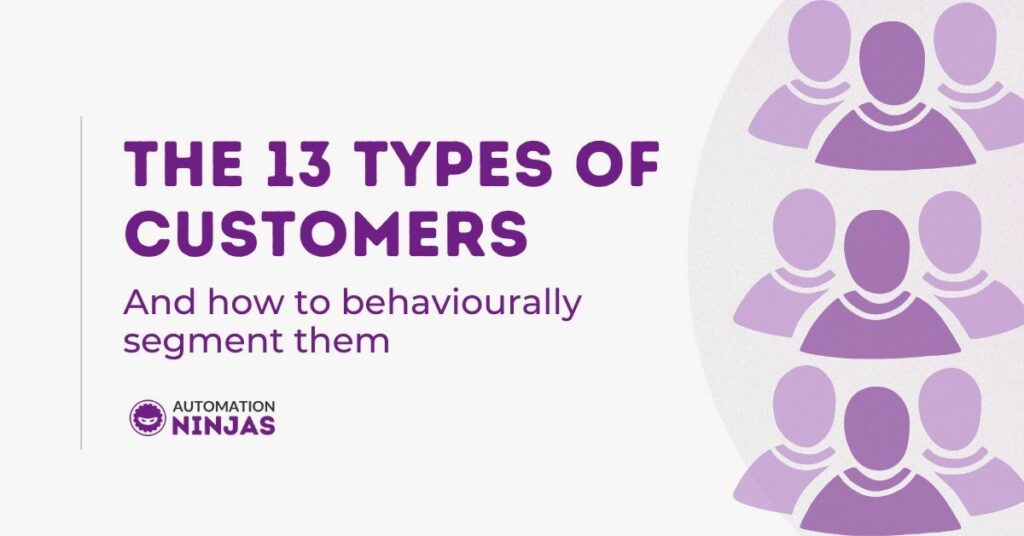
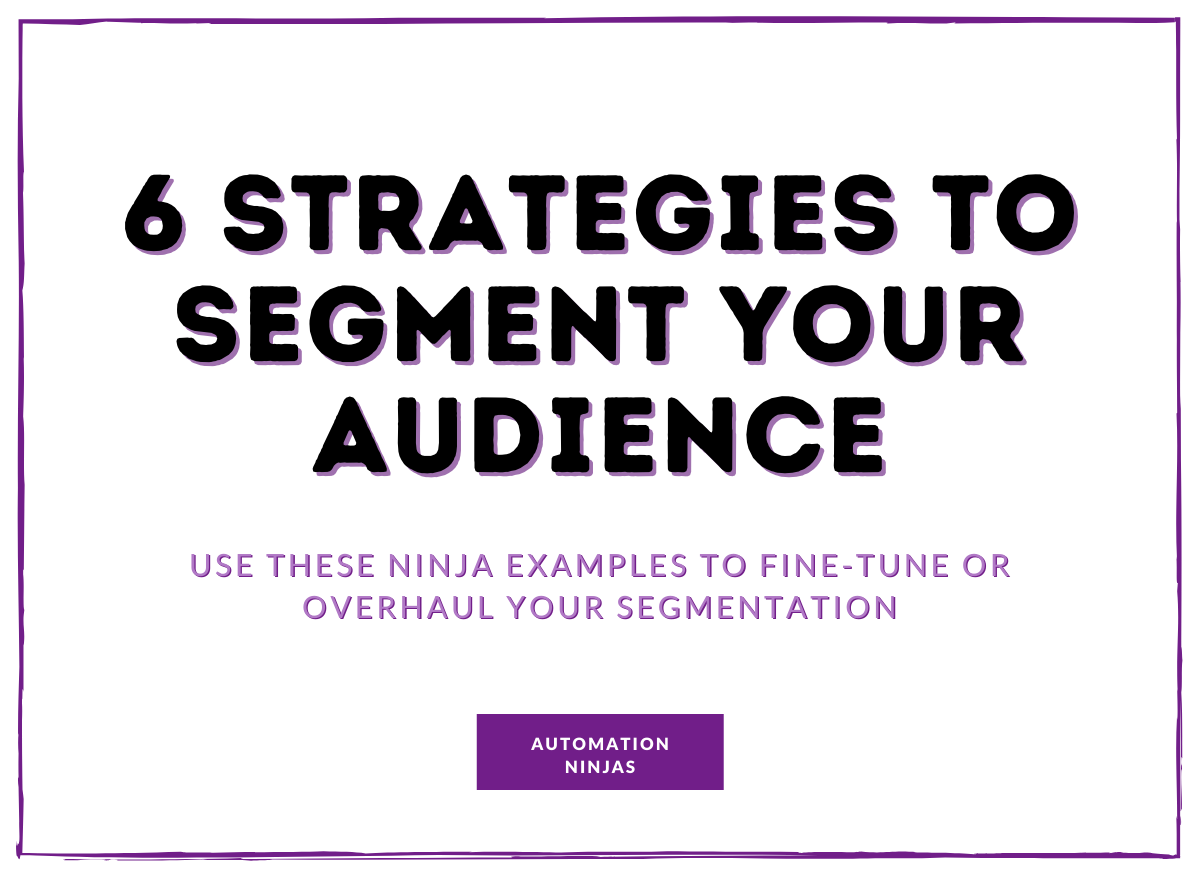
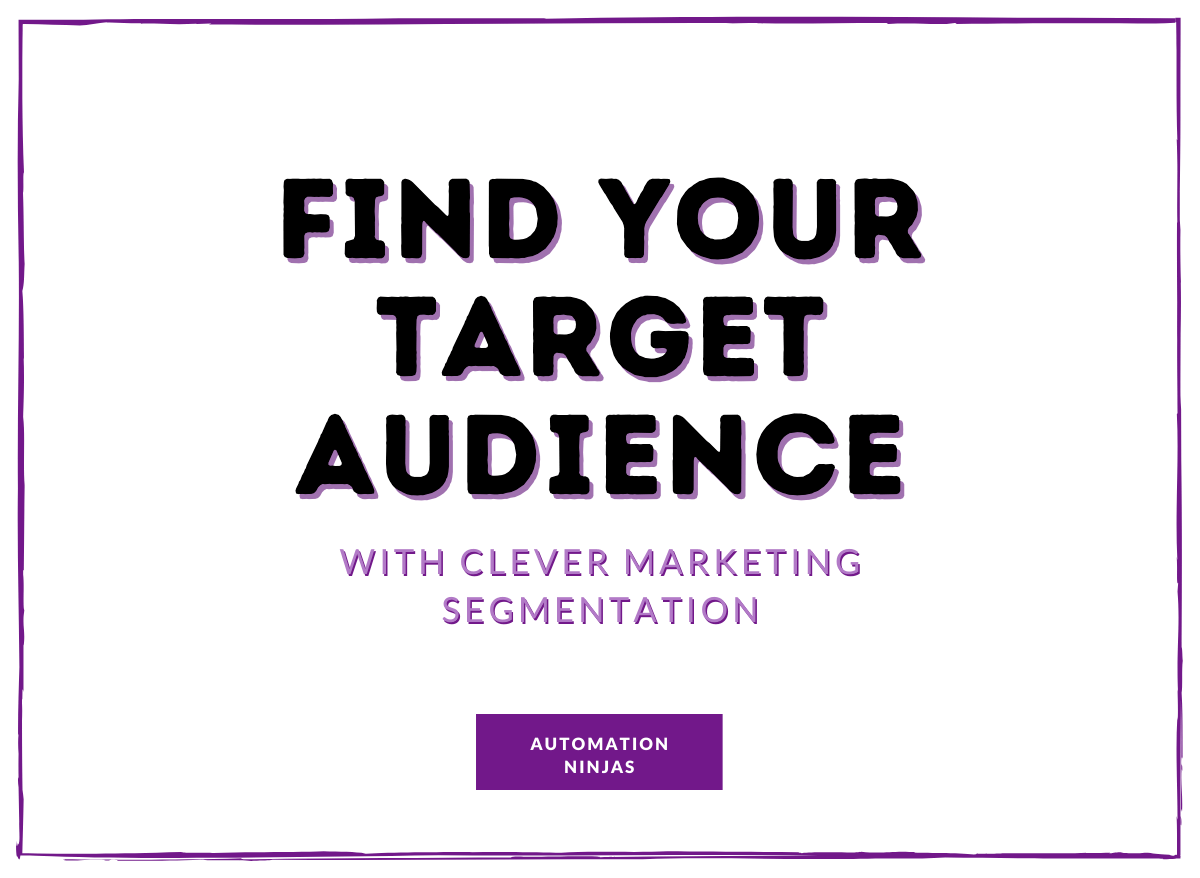
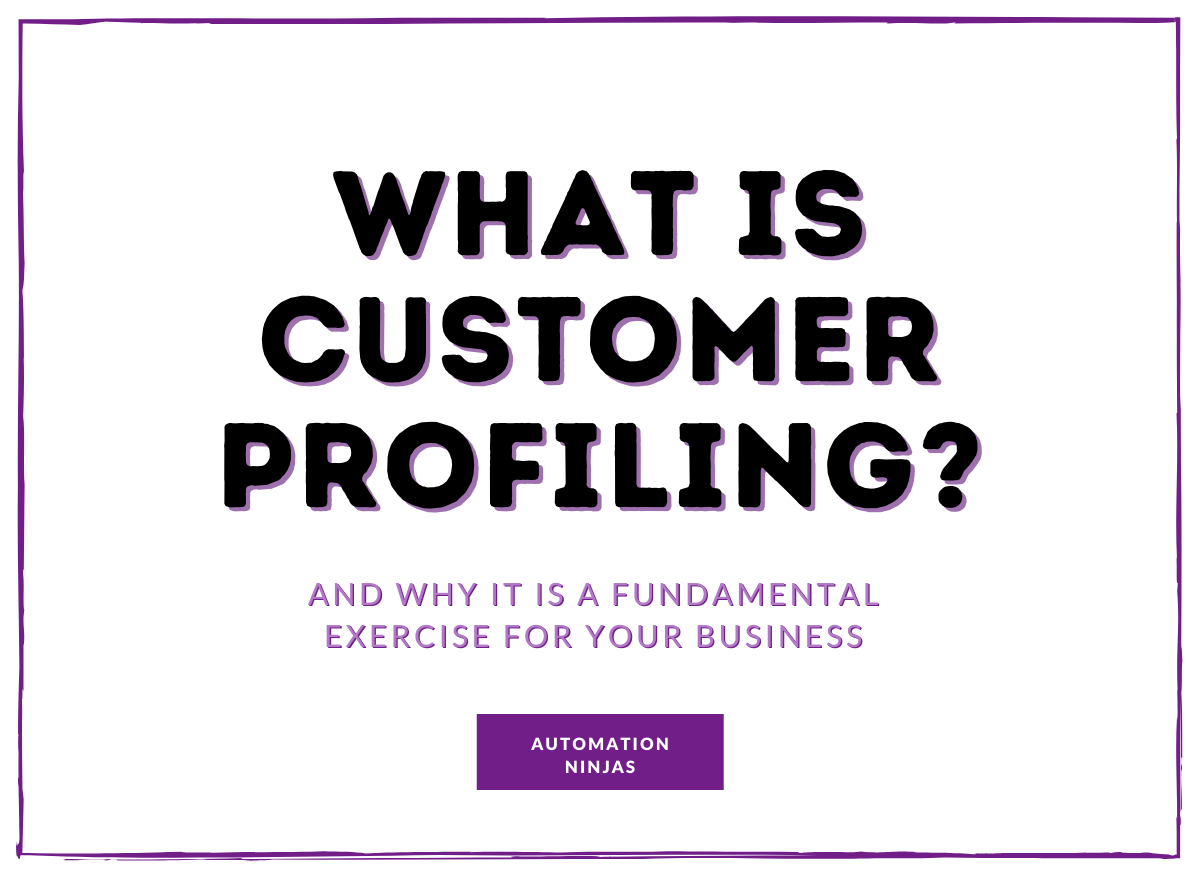

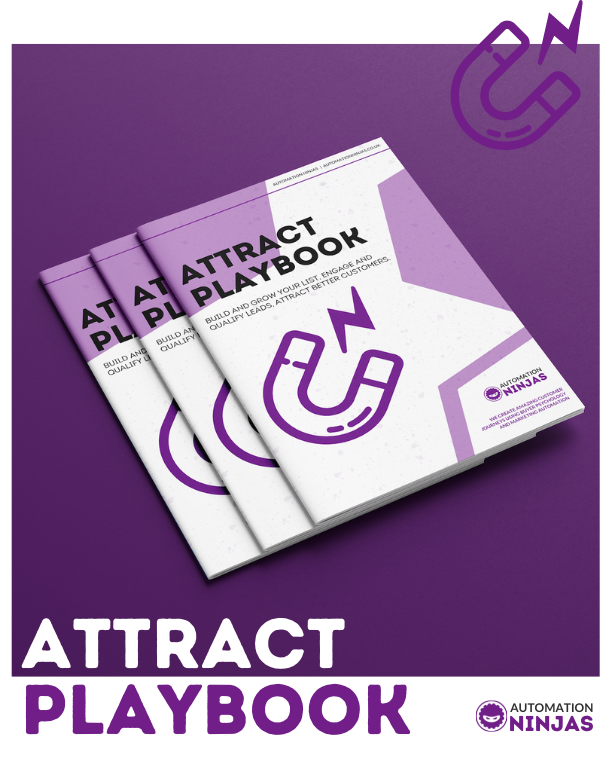
Great breakdown of customer segmentation! This article provides valuable insights into understanding and targeting different customer types effectively. Thanks for sharing these strategies!